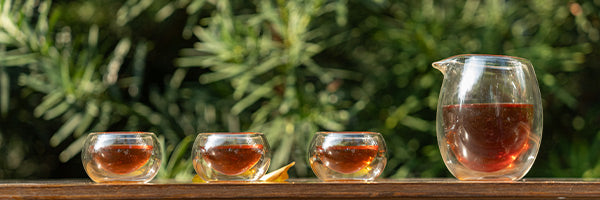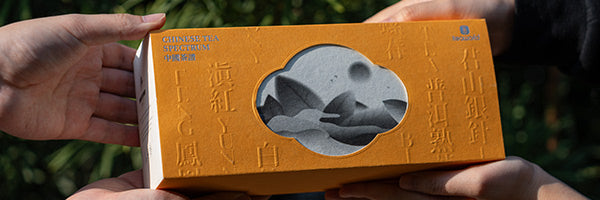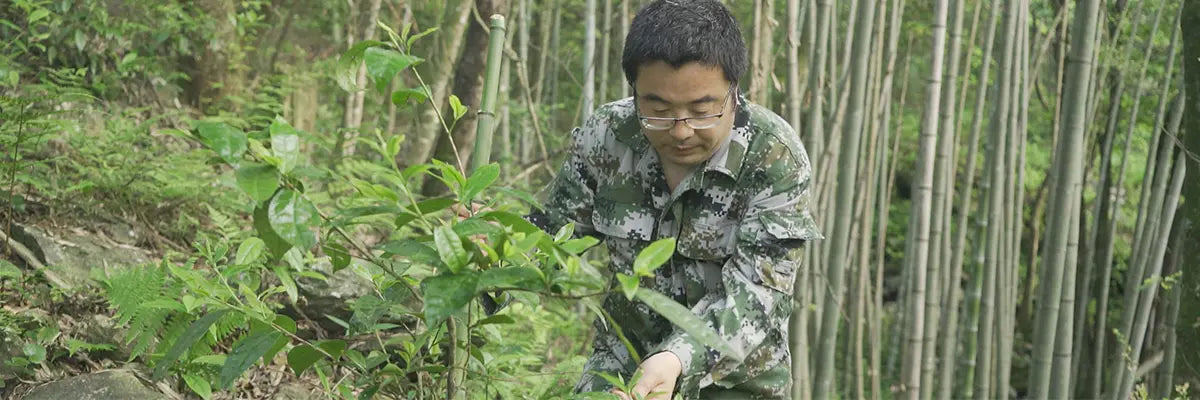1. Правило номер один для хорошего чая — если вам нравится его пить, это хороший чай.
Когда дело доходит до определения того, что делает чай хорошим, все экспертные мнения являются всего лишь рекомендациями. Помните, чай, который действительно подходит именно вам, который ощущается особенно удовлетворяющим и заставляет вас хотеть большего, это действительно хороший чай. Качество чая в конечном итоге определяется вашими собственными вкусовыми рецепторами, поэтому вы должны покупать чай, который соответствует вашим личным предпочтениям. Проще говоря, если он вкусный, это должно быть вашей главной причиной для его покупки.
2. Определитесь с типом чая, который вы хотите приобрести.
В Китае существует шесть основных категорий листового чая . В зависимости от уровня ферментации, от самого низкого до самого высокого, они следующие: зеленый чай, белый чай, желтый чай, улун, черный чай и темный чай (или ферментированный чай).
Зеленый чай

Характеристики зеленого чая
Прежде всего, зеленый чай неферментирован. Его ключевым процессом является «фиксация» или «уничтожение зеленого», когда высокие температуры используются для нейтрализации ферментов в чайных листьях. Этот процесс максимально сохраняет хлорофилл и катехины в чае, придавая ему свежий и живой вкус. Аромат зеленого чая может варьироваться от растительных и цветочных до бобовых и каштановых нот. Поэтому, когда вы пьете зеленый чай, вы наслаждаетесь именно этим освежающим вкусом.
Кому следует пить зеленый чай
Зеленый чай особенно полезен для людей со слабой конституцией, склонных к воспалениям или «разогреванию», или тех, кто проводит много времени перед компьютером. Поскольку зеленый чай не ферментируется, он богат катехинами и витаминами, обладает антибактериальными и противовирусными свойствами и помогает снять напряжение с глаз.
Рекомендации по зеленому чаю
С множеством ароматных сортов зеленого чая, на которые повлияли различные процессы и сорта, погружение в китайский зеленый чай может показаться пугающим для новичков. Тем, кто начинает свой путь, стоит попробовать последнюю коллекцию китайских зеленых чаев iTeaworld. Этот сэмплер зеленого чая вручную отбирает шесть классических китайских зеленых чаев, стремясь продемонстрировать богатство и разнообразие вкусов из разных провинций. Он охватывает ряд репрезентативных техник и вкусовых профилей, в том числе: чай Лунцзин (Колодец Дракона) из Чжэцзяна, воплощающий технику обжарки на сковороде; Хуаншань Маофэн из Аньхоя, раскрывающий свежесть высокогорных чаев; Би Ло Чунь из Цзянсу, позволяющий вам ощутить свежесть весенних почек; Эньши Юйлу из Хубэя, предлагающий насыщенный паровой вкус; Зеленый чай с жасмином из Гуанси, источающий цветочные ноты; и Зеленый чай Древнего Дерева из Юньнани, представляющий глубокую глубину старых чайных деревьев. Этот набор предоставляет любителям чая прекрасную возможность в полной мере оценить очарование китайского зеленого чая за один раз.
Белый чай

Характеристики белого чая
Белый чай подвергается минимальной ферментации, а его основная обработка сосредоточена вокруг сушки на солнце. Традиционный метод включает в себя повторную сушку, позволяющую чаю слегка ферментироваться самостоятельно, сохраняя свой натуральный вкус в максимальной степени. Белый чай имеет значительную лечебную ценность и часто называется «чаем в первый год, лекарством в третий год и сокровищем в седьмой год».
Вкусовой профиль белого чая
Вкус белого чая в первую очередь освежающий. Высокосортные чаи, такие как Silver Needle и White Peony, имеют свежий, сладкий вкус практически без горечи. Низкосортные, такие как Gong Mei и Shou Mei, могут быть более горькими и могут выиграть от выдержки. Свежие белые чаи часто имеют чистый цветочный аромат или легкий травянистый запах, в то время как выдержанные белые чаи приобретают лекарственный или выдержанный аромат.
Кому следует пить белый чай
Белый чай особенно подходит для людей, которые часто курят или употребляют алкоголь, или для тех, кто находится в состоянии сильного стресса, связанного с работой. Это связано с тем, что белый чай содержит большое количество флавоноидов, которые могут помочь облегчить неприятный запах изо рта, связанный с курением и употреблением алкоголя. Кроме того, он может в некоторой степени улучшить качество сна, обеспечивая более глубокий и спокойный сон.
Разновидности белого чая
Традиционно белый чай является фирменным напитком провинции Фуцзянь. Впервые он был успешно произведен в городе Фудин, благодаря чему белый чай Фудин до сих пор считается самой аутентичной версией. Мир белого чая разнообразен, и такие сорта, как White Hair Silver Needle, White Peony, Gong Mei и Shou Mei, принадлежат к традиционным шести основным категориям чая. Такие чаи, как Golden Flower White Tea или прессованный чай, изготовленный с использованием традиционных процессов приготовления белого чая, считаются переработанными белыми чаями. Каждый сорт обладает уникальным качеством и служит основой для понимания белого чая.
Рекомендации по выбору белого чая
В Китае, если вы хотите узнать больше о белом чае, рассмотрите возможность ознакомиться с коллекцией белого чая от iteaworld. Эта коллекция позволяет вам ощутить вкусовые различия различных сортов белого чая в одной упаковке.
Желтый чай

Характеристики желтого чая
Третья категория — это слабоферментированный желтый чай. Основной процесс желтого чая — «запечатывание желтого». Основной метод заключается в том, что чайные листья, которые были либо обжарены на сковороде, либо скручены, оборачивают бумагой или укладывают и накрывают влажной тканью. Это позволяет чайным эмбрионам естественным образом окисляться под воздействием влаги и тепла, уменьшая горечь. В результате желтый чай имеет сладкий, мягкий и насыщенный вкус. Этот процесс «запечатывания желтого» придает чайному настою дополнительную насыщенность. Желтый чай более мягкий, чем зеленый чай, и его аромат имеет дополнительный зрелый аромат (похожий на кукурузу или каштан), в котором преобладают цветочные и фруктовые ноты.
Кому следует пить желтый чай
Те, кто постоянно страдает от плохого пищеварения или отсутствия аппетита, могут извлечь пользу из употребления желтого чая. Метод «запечатывания желтого», используемый при производстве желтого чая, генерирует значительное количество пищеварительных ферментов, которые могут способствовать перистальтике кишечника и помогать пищеварению.
Рекомендации по выбору желтого чая
Желтый чай — это слабоферментированный чай, известный своим богатым и сладким профилем, и он занимает нишу среди шести основных категорий чая. В зависимости от стандартов сбора его можно разделить на мелколистовой желтый чай и крупнолистовой желтый чай. Известные сорта включают Junshan Silver Needle, Meng Ding Yellow Buds и Huoshan Yellow Buds. Те, кто заинтересован в дегустации желтого чая, могут обратиться в службу поддержки клиентов iteaworld, чтобы получить бесплатный образец. В нашем ассортименте заметно выделяется квинтэссенция Junshan Silver Needle из категории желтых чаев.
Чай улун

Характеристики чая улун
Четвертая категория — полуферментированный улун, основным методом обработки которого является «встряхивание и разбрасывание». Этот процесс состоит из двух этапов: встряхивание и проветривание. После многократного встряхивания и разбрасывания чайные листья претерпевают сложные и насыщенные ароматические изменения. Первоначальный растительный вкус постепенно трансформируется в цветочные и фруктовые ноты, поэтому улун часто имеет ароматный и мягкий характер.
Вкус чая улун
Пятая категория — полностью ферментированный черный чай. Основной метод для черного чая — ферментация. Скрученные чайные листья помещают в ферментационные рамки или тележки, накрывают ферментационной тканью, смоченной в горячей воде, и после нескольких часов ферментации они приобретают характерный ярко-красный цвет и насыщенный вкус черного чая.
Кому следует пить чай улун
Чай улун подходит для людей с жиром на животе и тех, кто пытается похудеть. Это связано с тем, что дубильная кислота в чае улун может способствовать сжиганию жира, особенно после употребления жирной пищи. Его употребление не только помогает сократить жир, но и предотвращает набор веса.
Рекомендации по выбору чая улун
Чай улун, также известный как «сине-зеленый чай», представляет собой полуферментированный чай, уровень ферментации которого находится между зеленым и черным чаем. Его технология обработки сочетает в себе методы как зеленого, так и черного чая, что делает его по-настоящему уникальным. Чай улун классифицируется по регионам производства, включая Южный Фуцзяньский улун, Северный Фуцзяньский улун, Гуандунский улун и Тайваньский улун. Самые знаковые чаи улун включают Те Гуань Инь , Да Хун Пао , Фэнхуан Даньцун , Шуй Сянь и Жугуй. Если вы не уверены, какой тип выбрать, рассмотрите Oolong Tea Sampler, представленный Iteaworld. Эта коллекция чая улун включает четыре известных чая улун, каждый из которых имеет разную степень ферментации и ароматы: цветочный Те Гуань Инь, Феникс Даньцун, Чжанпин Шуй Сянь и Да Хун Пао.
Черный чай

Характеристики черного чая
Пятая категория — полностью ферментированный черный чай. Суть обработки черного чая — ферментация. После того, как чайные листья скручены, их помещают в ферментационные рамки или тележки и накрывают тканью, смоченной в горячей воде. После нескольких часов ферментации в кучах чай приобретает яркий красный цвет и насыщенный, мягкий вкус.
Вкус черного чая
Листья черного чая подвергаются полной ферментации, в результате чего получается красновато-коричневый цвет. Он характеризуется крепким вкусом, часто сопровождаемым цветочными, фруктовыми и медовыми ароматами. Некоторые сорта, такие как Лапсанг Сушонг, также имеют отчетливый аромат соснового дыма и аромат лонгана. Он хорошо сочетается с молоком или сахаром.
Кому следует пить черный чай
Люди, у которых постоянно холодные руки и ноги, или те, кто легко чувствует усталость, могут извлечь пользу из потребления черного чая. Это связано с обилием теарубигинов и катехинов, содержащихся в черном чае.
Рекомендации по выбору черного чая
Черный чай можно в целом разделить на три типа: черный чай Сяо Чжун, черный чай Гунфу и ломаный черный чай. В Китае в основном потребляются черный чай Гунфу и черный чай Сушонг, оба из которых являются листовыми чаями. Ломаный черный чай — это тип, основанный на морфологии листа, включающий как сорта Гунфу, так и Сушонг. Известные черные чаи из Китая включают Лапсанг Сушонг, Цзинь Цзюнь Мэй, черный чай Юньнань , черный чай Индэ , Нин Хун, красный сычуань и Кимун. Если вы хотите понять и сравнить известные китайские черные чаи, рассмотрите Black Tea Sampler от Iteaworld, представленный в 2022 году. В эту коллекцию входят два разных черных чая Сушонг: один копченый и один без копченого вкуса. В нее также входят известный черный чай Юньнань и черный чай Индэ. Если вы считаете, что коллекция не предлагает достаточного разнообразия, обратите внимание на обновленную коллекцию черного чая Iteaworld 2023 года. В этот набор войдут шесть знаменитых черных чаев: Кимун, Дянь Хун, черный чай Индэ, копченый Лапсанг Сушонг, дикий черный чай, приготовленный из чистых листьев дикого чая, и черный чай, приготовленный из вековых древних чайных деревьев из Гуанси.
Тёмный чай

Характеристики темного чая
Последняя категория — постферментированный темный чай. Основной процесс темного чая — «сжатие». Темный чай раньше продавался в приграничные районы. Чтобы обеспечить длительную транспортировку и простоту хранения, очищенный темный чай пропаривают и прессуют в различные формы, такие как лепешки, комки, кирпичи или даже прессуют в корзины или бамбуковые трубки. Темный чай ценится за выдержку — чем он старше, тем он вкуснее, улавливая суть времени и трансформацию выдержанного чая.
Вкус темного чая
Листья темного чая, прошедшие длительную ферментацию и хранение, становятся темно-коричневыми и обладают глубоким выдержанным ароматом и уникальным вкусом. Со временем его вкус становится еще более изысканным, а аромат может включать лекарственные ноты, орехи бетеля и грибковые ароматы.
Кому следует пить темный чай
Людям с проблемами пищеварения может быть полезно пить темный чай, поскольку в результате процесса ферментации в нем образуется множество полезных микробов, которые помогают регулировать работу кишечника, устраняют жирность и способствуют пищеварению.
Рекомендации по выбору темного чая
Темный чай — это тип прессованного постферментированного чая, включая такие разновидности, как черные кирпичи, кирпичи Фу, зеленые кирпичи, кирпичи Кан и чай Лю Бао. Каждый тип темного чая специфичен для разных регионов. Основные районы производства темного чая находятся в таких провинциях, как Хунань, Хубэй, Гуанси, Юньнань и Сычуань. Термин «темный чай» охватывает различные типы, включая темный чай Хунань, пограничный чай Сычуань, выдержанный зеленый чай Хубэй, Юньнаньский пуэр и чай Лю Бао Гуанси.
Если вы не знакомы с этими различиями, с нетерпением ждите новую коллекцию темного чая Iteaworld, в которую войдут темный чай из Хунаня, темный чай из Хубэя, чай Пуэр из Юньнань и чай Лю Бао из Гуанси.
Наконец, если вы не уверены в различиях между шестью основными категориями чая и хотите понять их типичные вкусы, следите за классическим собранием Iteaworld, которое скоро будет запущено. С помощью этой коробки вы можете сравнить и понять различия между шестью основными категориями чая.
3. Различие между качественным и некачественным чаем
3.1 Сухой чай
При оценке сухого чая в основном обращайте внимание на его форму, однородность, цвет и пушистость. Различные формы, такие как полосчатый, плоский или круглый чай в форме бусины, имеют разные стандарты оценки. Полосчатый чай должен иметь плотно сформированные листья; плоский чай должен быть плоским, ровным и прямым; чай в форме бусины должен быть плотным и твердым. Высококачественный сухой чай должен иметь постоянную форму и цвет, не иметь сломанных листьев, стеблей и других примесей. Некоторые чаи с пухом должны иметь заметную и ровную пушистость.
3.2 Цвет ликера
Цвет настоя относится к цвету заваренного чая. Во время дегустации определите цвет чая – зеленоватый, абрикосово-желтый, красновато-коричневый и т. д.; оцените яркость – светящийся он или тусклый; и оцените чистоту – прозрачный он или мутный.
3.3 Аромат
Аромат относится к запаху, который выделяется после заваривания чая. Вы можете использовать чашки для запаха или можете непосредственно вдыхать запах заваренного чая или использованных листьев. Аромат чая может быть цветочным, выдержанным, ореховым или копченым на сосне и т. д.
3.4 Вкус
Пробуя чай, учитывайте его крепость, насыщенность, свежесть, горечь, терпкость и любые другие отчетливые вкусы. Покрутите чай во рту, чтобы получить полное представление о его вкусовом профиле.
3.5 Использованные листья
Использованные листья или листья после заваривания дают представление о качестве чая. Эти листья следует равномерно распределить, чтобы проверить их нежность, однородность, цвет и чистоту.
4. Различия между весенним, летним и осенним чаем
В Китае чай собирают в три сезона: весной, летом и осенью. В зависимости от сезона чай может иметь различные вкусы и характеристики.
При покупке чая вы обращали внимание на эту информацию? В следующий раз учтите это.
Попробуйте описанные выше методы и не стесняйтесь делиться своим опытом выбора чая в комментариях.












































































